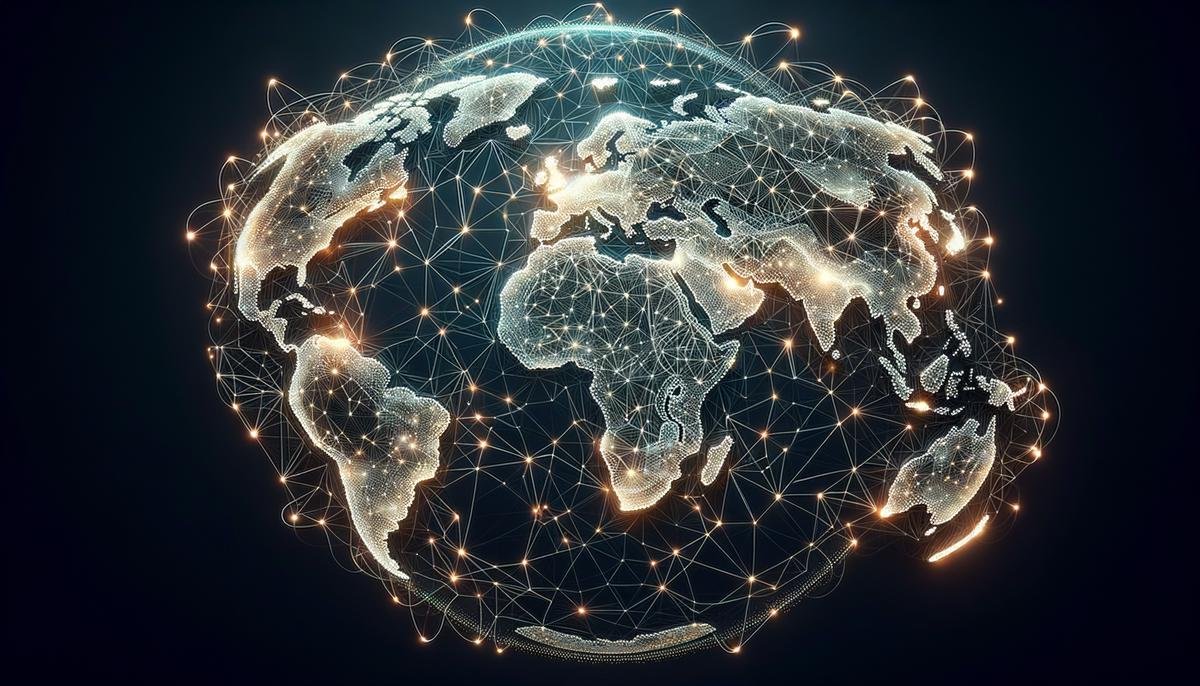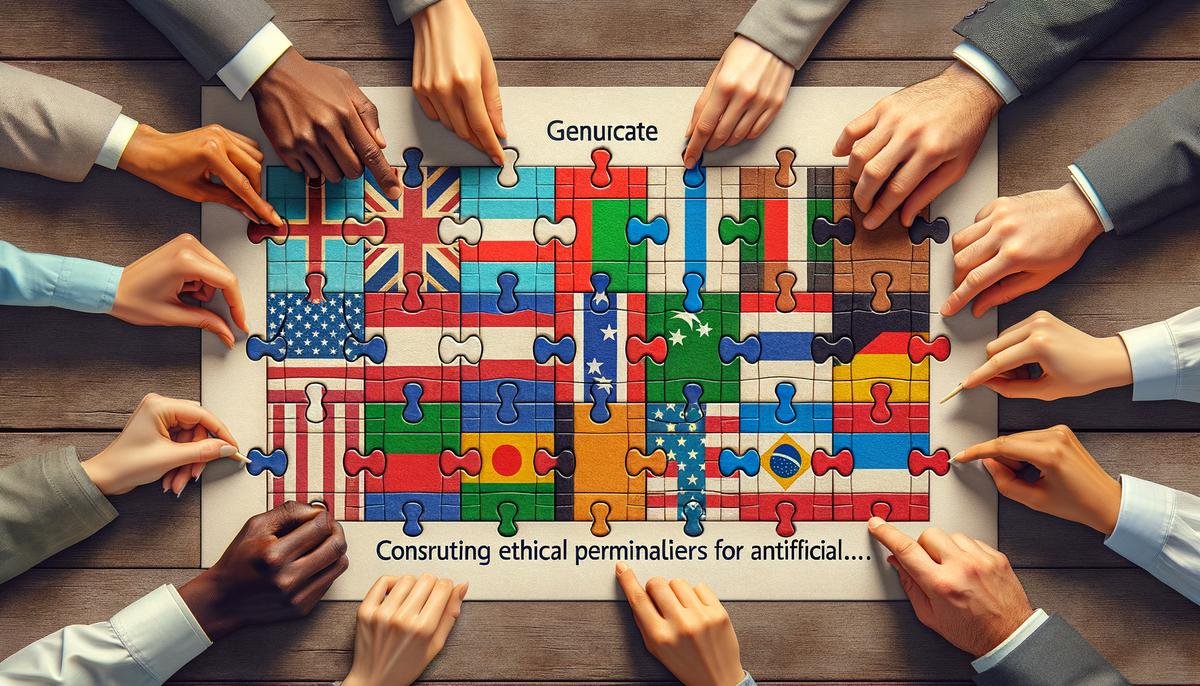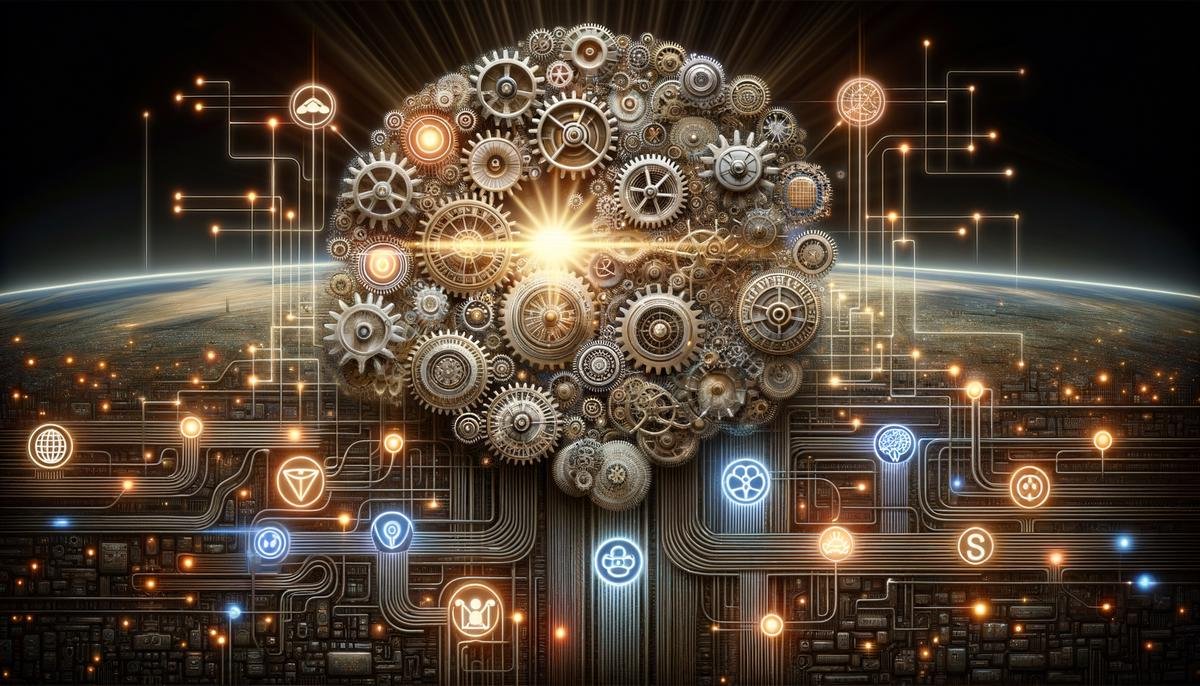Today, the world of technology is evolving at a lightning pace, bringing us into a future where artificial intelligence (AI) plays a central role in nearly every aspect of our daily lives. This rapid advancement brings with it a pressing need to ensure that AI develops in a way that aligns with our highest ethical standards. From the technology we use at work to the apps that keep us connected with loved ones, the implications of AI are vast and multifaceted. It’s essential that we pause and reflect on how to empower this technology to work for the good of all, ensuring a future that embraces fairness, privacy, and a sense of shared responsibility.
Understanding Ethical AI
The Rise of Ethical AI: Navigating the Future Responsibly
In today’s rapidly evolving tech world, AI isn’t just a buzzword; it’s reshaping how we live, work, and interact. But with great power comes great responsibility, leading us to a critical conversation about Ethical AI. So, what’s the big deal, and why is everyone from Silicon Valley to your local coffee shop debating it? Let’s break it down in a way that’s easy to grasp and even easier to see why it’s a game-changer.
What is Ethical AI Anyway?Imagine a robot or a computer program that doesn’t just follow commands but makes decisions based on data. That’s AI for you. Now, sprinkle in some moral principles like fairness, privacy, and non-discrimination, and you’ve got Ethical AI. It’s about ensuring that as these AI systems make decisions, they’re doing so in a way that benefits everyone and harms no one. Sounds straightforward, right? But here’s where it gets spicy.
Why Ethical AI is the Talk of the Town- Fairness: We’ve all played games where someone cheated, and it wasn’t fun. Ethical AI ensures the game is fair for everyone, meaning decisions aren’t biased or unfair to specific groups. With AI being used in everything from job applications to loan approvals, fairness is non-negotiable.
- Privacy: Ever had someone snoop through your stuff? Not cool. Ethical AI safeguards our digital footprints, ensuring personal data isn’t misused or exposed without consent. In an age where information is gold, protecting privacy is paramount.
- Responsibility: Ever blamed your sibling for eating the last cookie? That’s passing the buck. With Ethical AI, there’s a big push to ensure those designing and deploying AI systems are accountable for their actions, especially when things go sideways.
- Transparency: Ever tried to solve a mystery without all the clues? Frustrating, isn’t it? Ethical AI champions transparency, making it easier to understand how AI decisions are made. This is crucial for trust and confidence in AI technologies.
Why Ethical AI is More Important Than Ever
Think about it. AI impacts almost every aspect of our lives, from the shows Netflix recommends to potentially life-changing decisions like medical diagnoses or sentencing in courts. As AI’s role in society grows, ensuring it aligns with ethical standards isn’t just nice; it’s essential. We’re talking about shaping a future where technology amplifies our best traits—fairness, empathy, and inclusivity—rather than our worst.
In a nutshell, Ethical AI is about creating a tech-driven world that we’re proud to pass on to future generations. It’s a hefty goal, sure, but with the rapid pace of AI development, there’s no time like the present to get it right. As we stand on the brink of what’s possibly the most transformative era in human history, the path we carve out now will set the course for decades to come. So, Ethical AI? It’s not just critical; it’s our moral compass in the digital age.

AI and Human Rights
Exploring the Intersection of AI and Human Rights: Unveiling the Risks
As we dive deeper into the realm of artificial intelligence (AI) and its pervasive influence on our daily lives, it becomes increasingly crucial to cast a light on the intersection of AI with human rights. This conversation isn’t just about the futuristic potential of AI to transform societies but more importantly, about the immediate risks and challenges it poses to basic human rights principles. So, let’s unwrap this complex layer-by-layer, keeping it simple yet insightful, much like peeling an onion without the tears.
First off, let’s talk about bias and discrimination in AI systems. Imagine applying for your dream job only to be screened out by an AI system not because you lack the qualifications, but because the AI has been unknowingly fed data that favors a certain demographic. This isn’t some dystopian future; it’s a present reality for some. AI systems learn from historical data, and if this data contains biases, the AI’s decisions will reflect these biases. This raises serious concerns about equality and non-discrimination, fundamental pillars of human rights.
Then there’s the big brother-like surveillance issue. In some parts of the world, governments employ AI-driven surveillance systems under the guise of public safety. However, without strict safeguards, these technologies can be used to infringe on the right to privacy and freedom of expression. Imagine being monitored 24/7, with every move and word being analyzed by an AI system. It feels like walking on eggshells in your own life, right?
Another ticking time bomb is the spread of misinformation through AI-powered platforms. Social media algorithms, designed to keep users engaged, can end up amplifying fake news and extremist content. This not only distorts public discourse but also undermines the right to access accurate information. In an era where information is power, AI systems can unwittingly become accomplices in spreading falsehoods that can have real-world consequences, from swaying elections to inciting violence.
The employment landscape is also undergoing seismic shifts thanks to AI. While automation and AI-driven tools can boost efficiency, they equally pose a risk to the right to work. As machines become capable of performing tasks traditionally done by humans, from driving trucks to analyzing legal documents, the specter of mass unemployment looms large. This isn’t about robots taking over the world; it’s about real people facing job insecurity and the societal fallout that could ensue.
Lastly, there’s the issue of AI in decision-making processes that directly impact human lives, like predictive policing or welfare allocation. Without transparency and accountability, there’s a real danger that AI systems can make erroneous decisions based on flawed data or algorithms. The risk here is not just a technical glitch but a fundamental violation of the right to a fair trial and to social security.
To navigate this complex terrain, it’s essential that AI development and deployment are guided by a human rights framework. This means actively involving diverse stakeholders in AI governance, continuously analyzing and correcting biases in AI systems, and ensuring that AI technologies enhance, rather than diminish, human rights.
In wrapping up (remember, we’re skipping the summary), the intersection of AI and human rights is a dynamic landscape filled with potential minefields. As we chart this unexplored territory, the guiding compass must be a commitment to human dignity and rights. The conversation isn’t about stalling innovation; it’s about steering it in a direction that uplifts humanity as a whole. Because at the end of the day, technology should serve us, not the other way around.

Creating Sustainable Ethical Guidelines for AI
Creating lasting ethical guidelines for AI is a journey that requires a serious commitment from tech developers, governments, and society as a whole. It’s not just about making sure AI doesn’t step on our toes today, but ensuring it respects our collective values far into the future. So, buckle up! We’re diving deep into what it takes to build a world where AI and ethical standards go hand in hand.
First off, continuous learning and adaptation are key. The world of AI is like a fast-moving river, constantly changing and evolving. To keep up, ethical guidelines for AI should be viewed as living documents – ready to evolve as new challenges and technologies emerge. This means having a mechanism for regular review and updates, ensuring that guidelines remain relevant and effective.
Engagement and collaboration are at the heart of this journey. It’s not enough for a handful of people to decide what’s ethical for AI; it involves everyone – from tech developers to end-users, from ethicists to policymakers. Creating forums for dialogue, workshops, and conferences where diverse groups can share perspectives is crucial. By fostering collaboration, we can develop a more inclusive set of guidelines that reflect a wide array of values and concerns.
Education plays a massive role as well. The intricacies of AI and its ethical implications can be daunting. Therefore, raising awareness and understanding of ethical AI among developers, users, and policymakers is essential. Educational programs, online courses, and resources can help demystify AI ethics, making it easier for everyone to contribute to the discussion and implementation of ethical guidelines.
Commitment to diversity and inclusion is another cornerstone. AI systems are only as good as the data they’re fed, and if that data comes from a narrow slice of society, it’s bound to misrepresent or ignore the needs and rights of many. Ensuring that AI development teams, and the data they use, are as diverse as the societies they serve helps mitigate biases from the get-go.
Transparency and openness must be non-negotiable. For people to trust AI, they need to understand how it works and how decisions are made. Making AI systems’ operations understandable and inspectable by external parties encourages accountability and helps identify and correct ethical shortcomings.
Lastly, putting ethics into action requires enforceable policies and regulations. These policies should ensure that ethical guidelines are not just recommendations but requirements. Governments play a critical role here, creating laws and regulations that protect citizens from potential abuses and ensure that AI serves the public good.
In the quest to create lasting ethical guidelines for AI, patience and perseverance are virtues. It’s a complex process with no shortcuts, but it’s also an exciting opportunity. By engaging collectively in this endeavor, we can ensure that AI technologies enhance our world, respecting the dignity, rights, and freedoms of all individuals. Let’s roll up our sleeves and get to work – after all, the future of AI is not just in the hands of tech developers, but in all of ours.

Case Studies: The Dark and Bright Sides of AI
Exploring AI’s Ethical Landscape: A Journey Through Its Triumphs and Trials
As we navigate through the digital age, the fusion of artificial intelligence (AI) and ethics has sparked a worldwide conversation. It’s like we’re on a path, discovering how to balance innovation with principles that protect humanity. Let’s dive deeper into what AI’s ethical journey teaches us, embracing both its shining victories and challenging setbacks.
From Chessboards to Courtrooms: AI’s Diverse Impact
Picture AI, not just as technology playing chess but stepping into roles from diagnosing diseases to shaping our viewing habits. It’s awe-inspiring, right? Each success unfolds a new chapter in AI’s potential, demonstrating its capability to enhance efficiency and decision-making. For instance, AI’s application in healthcare has revolutionized patient care and treatment plans, tailoring them to individual needs. In entertainment, algorithms curate personalized recommendations, making sure you find your next binge-worthy show. These triumphs underline AI’s versatility and its knack for enriching various facets of our lives.
Yet, with great power comes great responsibility. The ethical implications of AI’s capabilities pose intriguing puzzles. Can AI discern right from wrong? The intricacies of ethical AI remind us of the importance of embedding fairness and transparency into these digital brains. It’s akin to teaching AI the value of empathy and inclusivity, ensuring it respects human rights and societal norms.
Navigating the Ethical Quagmire: AI’s Missteps
However, AI’s journey isn’t devoid of stumbling blocks. One notable challenge is bias, often a reflection of skewed data feeding into the systems. Imagine seeking a job or a loan, and AI, unintentionally laced with prejudice, decides your fate. It’s a stark reminder that AI’s decision-making power can, if unchecked, perpetuate discrimination. Another ethical maze is privacy, with AI sometimes straying uncomfortably close to surveillance, nudging the boundaries of our personal freedoms.
Moreover, the specter of misinformation looms large. AI-powered platforms, while revolutionary in connecting us, can also become conduits for spreading falsehoods, blurring the lines between fact and fiction. Herein lies the conundrum: how to leverage AI’s immense potential without compromising ethical standards.
Crafting a Compass for Ethical AI
So, what can we glean from AI’s ethical odyssey? First off, it’s clear that steering AI towards ethical north requires a concerted effort. It’s about marrying technology with human values, ensuring AI systems are not only smart but also fair and just. This involves scrutinizing the data fueling AI, consciously rooting out biases to pave the way for decision-making that respects diversity and equality.
The dialogue around privacy also needs deepening, setting boundaries that safeguard individual rights while fostering innovation. Furthermore, combatting misinformation necessitates robust algorithms that can differentiate between reliable and dubious content, anchored in the principle of truthfulness.
In essence, the journey of ethical AI is a collective quest. It calls for engaging stakeholders across the spectrum – from developers to policymakers, from ethicists to the general public. The goal? To forge a blueprint for AI that not only pushes the envelope in innovation but does so with a moral compass guiding its path.
In conclusion, AI’s tale of ethics is a mixed bag of extraordinary achievements and challenging dilemmas. Its successes remind us of technology’s power to revolutionize our world, while its failures prompt a reevaluation of how we encode our values into these digital entities. As we stand on this precipice, looking out onto the horizon of AI’s possibilities, let’s commit to a future where technology advances hand in hand with ethical integrity. After all, in the grand story of AI, ethics forms the backbone of a narrative that champions both innovation and humanity.

As we stand on the threshold of a new era defined by artificial intelligence, it becomes clear that the decisions we make today will shape the world for generations to come. AI offers us an unparalleled opportunity to redefine the landscape of modern life, making it more inclusive, equitable, and tuned to the needs of humanity. By holding ourselves and the technology we create to the highest ethical standards, we can build a future where AI acts as a force for good, enhancing our lives while respecting our values and rights. It’s not just about the technology we develop, but the kind of world we aspire to live in. Together, let’s commit to a path where ethics guide the advancement of AI, ensuring a brighter, more just future for everyone.




